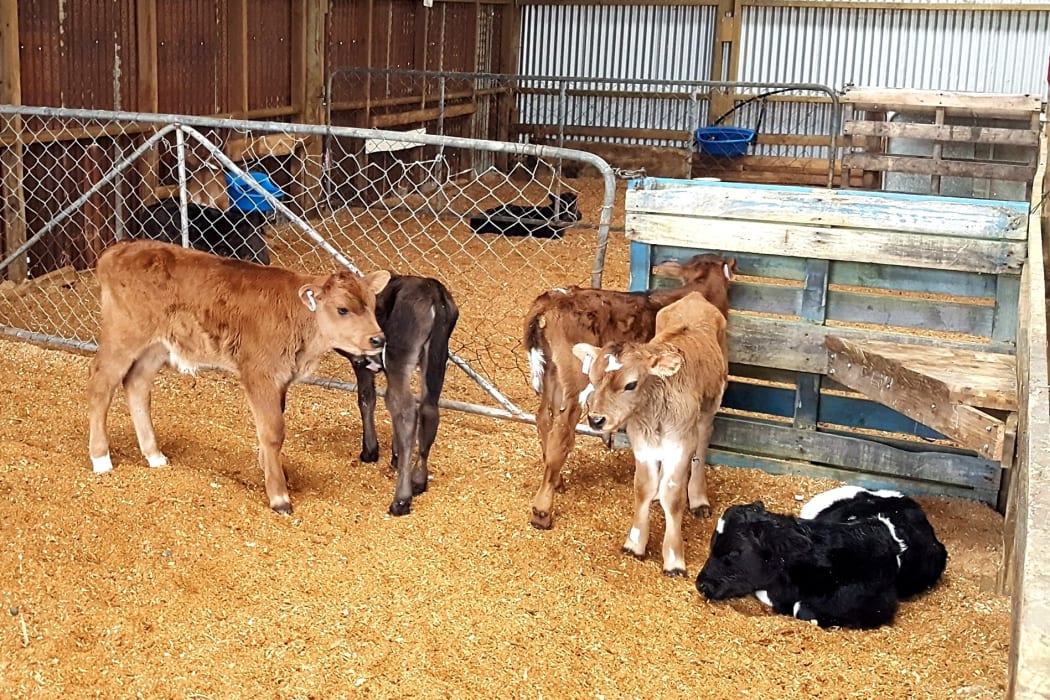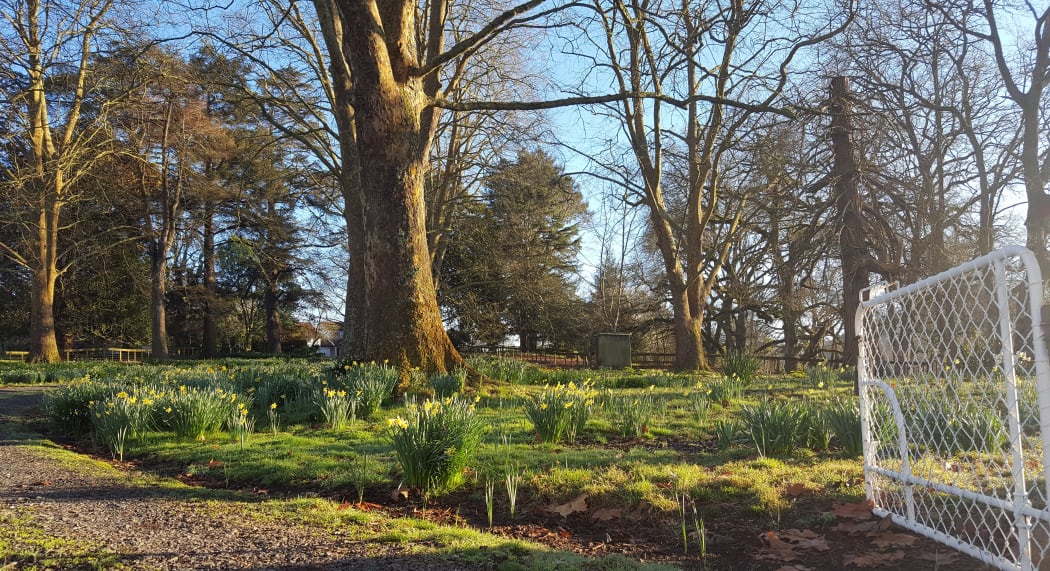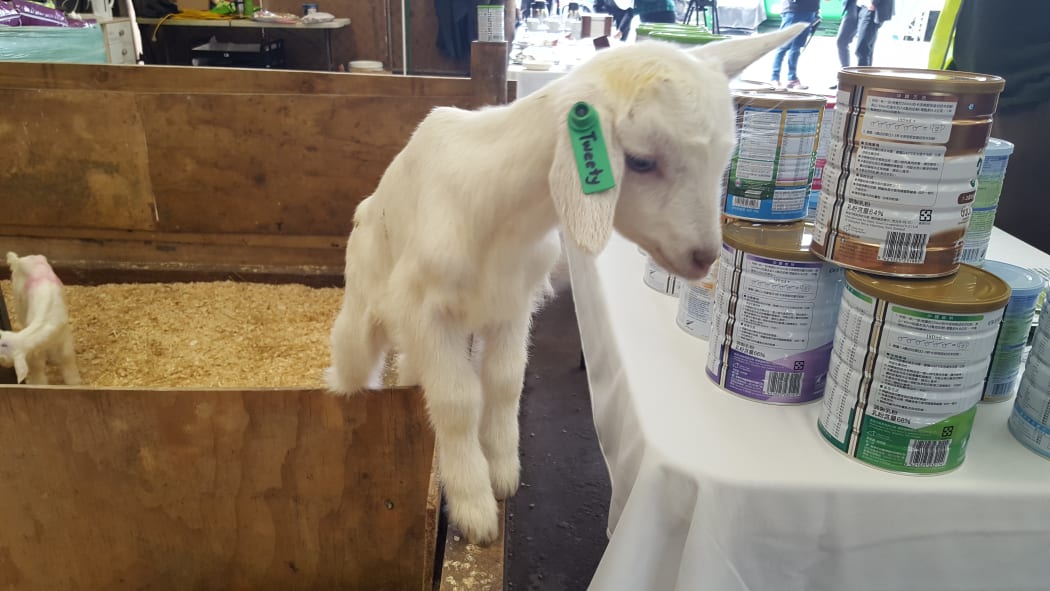Do you know what's happening on farms and orchards around New Zealand? Each week Country Life reporters talk to people in rural areas across the country to find out.

Photo: RNZ/Cosmo Kentish-Barnes
Northland has had a fantastic winter. While the skies delivered two and a half times the normal amount of rain in June, July and August were extremely mild and farmers didn't need to put on their wet weather gear nearly as often. Calving is all but finished so farmers are thinking ahead to mating and treating cows that had trouble calving so they'll be in good shape for the next round. With the threat of Mycoplasma Bovis being transferred from farm to farm, farmers are being advised to lease bulls from credible sources.
In South Auckland, Pukekohe had a fine weekend but heavy rain fell on Wednesday leaving the ground too wet to be worked on. While the free irrigation is normally welcome, too much of a good thing is entirely another matter. Some crops are showing signs of diseases that flourish in wet conditions. Heavy supplies of broccoli continue to be hard to sell.
Waikato farms are very wet underfoot and some farmers are still waiting for the grass to grow. The day when farms start to grow more grass than the cows need is usually 10 September - so it can't come soon enough. Most herds are three quarters through calving. Fonterra is implementing a new grading system for milk from 1 September and it is making farmers a bit nervous. When cows are fed a lot of palm kernel, fatty acids are picked up in the milk which can make it difficult to process into some products. Fonterra is recommending cows are fed no more than 3kg of palm kernel per day. There will be a financial penalty for milk that fails the grade.

Photo: RNZ/Susan Murray
In King Country it has been relatively mild but mingled with scattered showers. The warm sunny periods have been good for lambing. Ewes are in excellent condition which ironically can cause lambing difficulties. The lambs get bigger and they are harder to push out causing what is called "bearings". This is where the uterus turns inside out. Cattle have finished forage crops and are confined to intensive grazing behind a hot-wire with hay or silage. That lets farmers set stock their lambing ewes over the rest of the farm. Agricultural contractors are waiting for paddocks to dry out so re-cultivation for new pasture or summer crops can get underway.
It absolutely hosed down in Bay of Plenty mid week - our contact poured 77 millimetres out of the gauge on his orchard in two days. Pruners in kiwifruit orchards are seeing the light at the end of the tunnel. There is lots of cash sloshing about in the kiwifruit industry at the moment, Zespri has paid dividends recently of $1.16 per share - the biggest share holder has 2 million shares - but the average grower will have received between $20,000 and $30,000. The industry still has a bit of green fruit to sell overseas - everyone's hoping it will find a home and won't need to be 'crop managed' a euphemism for tipping it out. There is a bit of trepidation in the dairy industry about the changes at the top in Fonterra and drop in forecast milk payout.
Taranaki has had a great couple of days this week and growth rates are really good. The province needed a good winter and has had it, thankfully. The summer drought meant there was very little supplementary feed in the cupboard.
We're told Gisborne had 'wicked' rain on Thursday. The farm consultant we speak to was at a tangi up the coast - and says water seemed to be bubbling up out of the ground. There was a big slip at Te Araroa. He says the countryside looks pretty good despite the drenching and once it starts getting warm they are likely to have a good spring. Lambs are still selling very well. Land is being cultivated for crops of stock feed. Gisborne oranges are being harvested and this year they're "beauty".
It has been beautifully mild in Hawke's Bay and farmers are a bit jumpy about whether the weather will turn. Docking is well underway - however on later farms, lambing is yet to start. Paddocks are being turned over for cropping here, too.
Friday in Wairarapa was cold, wet and miserable but otherwise, it has been a warm week with 15 to 16 degree days; they are perfect for lambing. Grass growth is a bit slow but should take off once the days lengthen. Wairarapa's magnolias are looking magnificent. They don't like winter frosts, so this winter has been ideal - and they're more beautiful than ever.

Photo: RNZ/Carol Stiles
It has been a damp, showery week in the Nelson/Motueka region. Orchards near the ranges to the West of Motueka received up to 25 millimetres of rain on Wednesday, and people are struggling to cultivate ground or do any spraying. Closer to Richmond it hasn't been as wet. Our contact who grows pip fruit at Appleby says the buds on his pear trees are already moving into the green tip stage - 10 days ahead of usual, so he's spraying oil and copper onto trees for protection against oyster-shell scale, mite and black-spot.
Northern Marlborough is wet underfoot, too, after more rain. A Linkwater dairy farmer says he is going to have to get the roller onto the paddocks that have been rutted by cow hooves. There are plenty of lambs and calves on the ground and no shortage of pasture. Buoyed by good prices, the forestry industry's doing a lot of logging in the Sounds, at Shakespeare Bay - a deepwater port on Queen Charlotte Sound in Picton.
West Coast dairy farms have passed the halfway point for calving. Our contact at Hokitika says the weather has been pretty good for this week. There have been a couple of wet days otherwise it has been fine and sunny. As well as calving and milking, he is getting some cultivation done. Paddocks that were in swedes are being sown with oats - a high energy feed for the cows leading into mating.

Photo: RNZ/Cosmo Kentish-Barnes
A couple of rainy spells have been welcomed in Canterbury - and combined with good day time temperatures, it is the perfect start to spring. This is a very busy time of the year with winter feed paddocks being planted into a range of crops, spring fertiliser being applied and spraying.
Central Otago farmers are gearing up for lambing. The pre-lamb snip has been done on the cross breds, while further up the hills, shearing is underway on the fine wool merinos. There have been a couple of good frosts this week, so stock are still getting a top up of bailage and hay. The winter games have wound up in the region. The mixed doubles curling event was held in Naseby at the Maniototo Curling Rink and the Canadian team came out on top, followed by Scotland, the USA and Norway.
Conditions in Southland have been quite mild and spring-like. Farmers are getting fertiliser on to give grass a boost, spring oats are going in on cleaned up Kale paddocks and sheep are being shorn. Calving is about half way through on our contact's dairy farm at Waimahaka. He says cows and calves are in good health and the only disappointment this week, is that Fonterra has cut its forecast milk payout for the current season by 25 cents to $6.75 a kilo of milk solids because of rising global supply.
- RNZ

